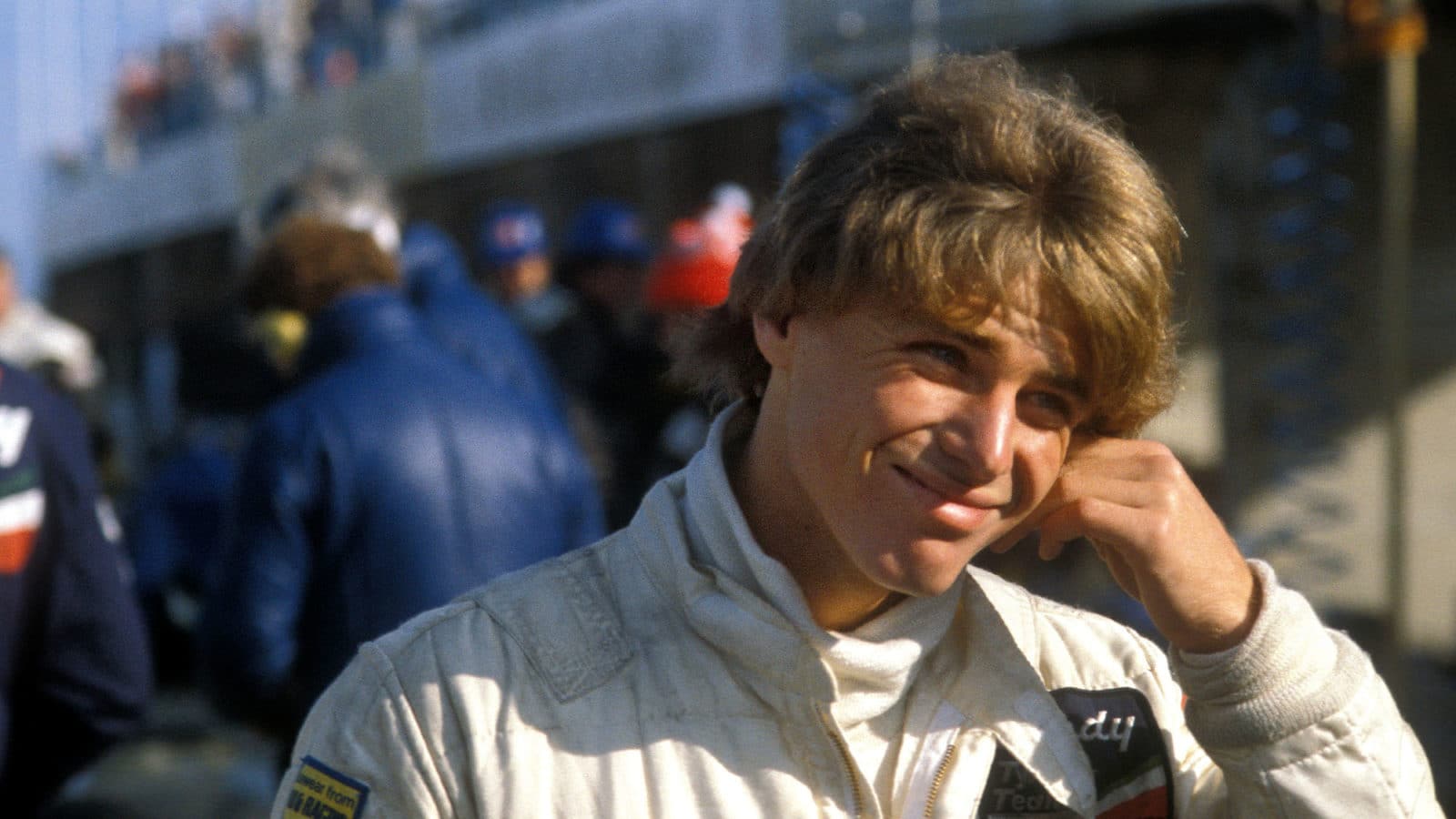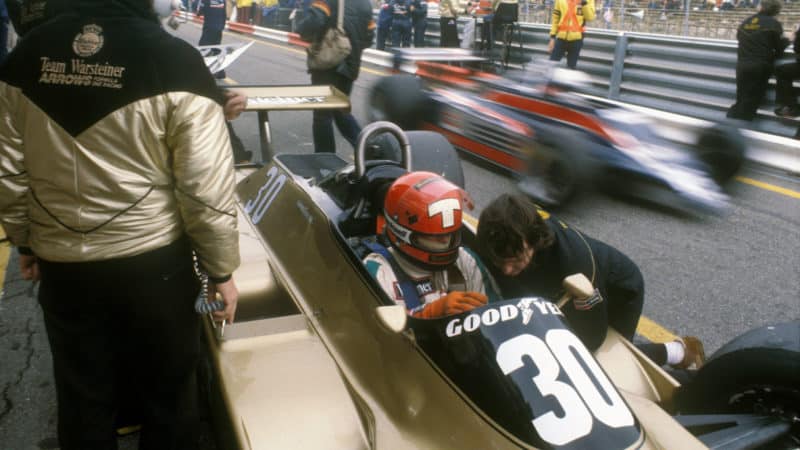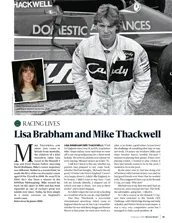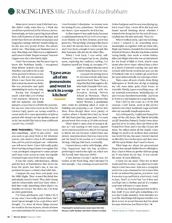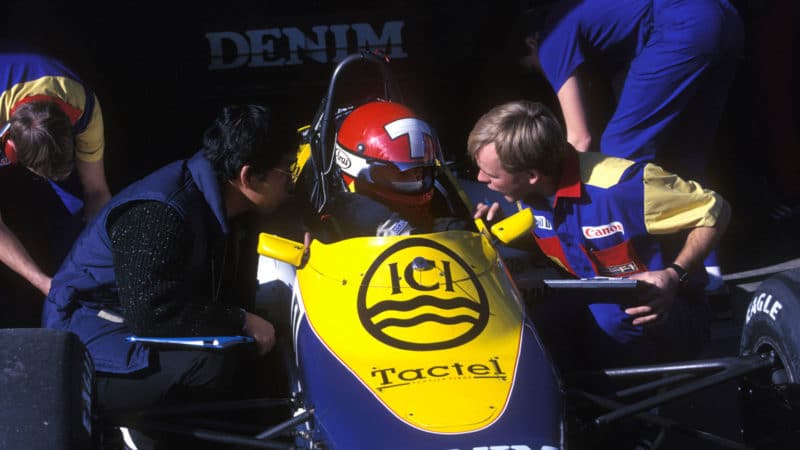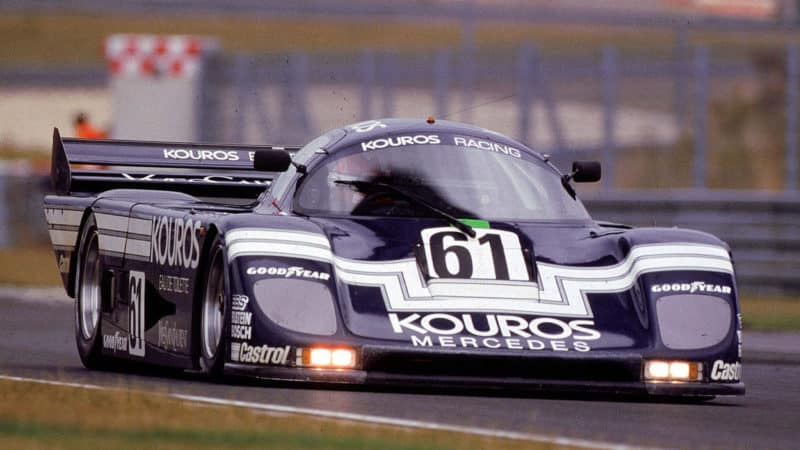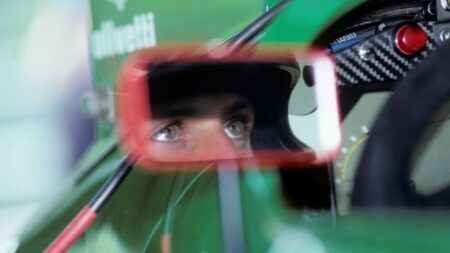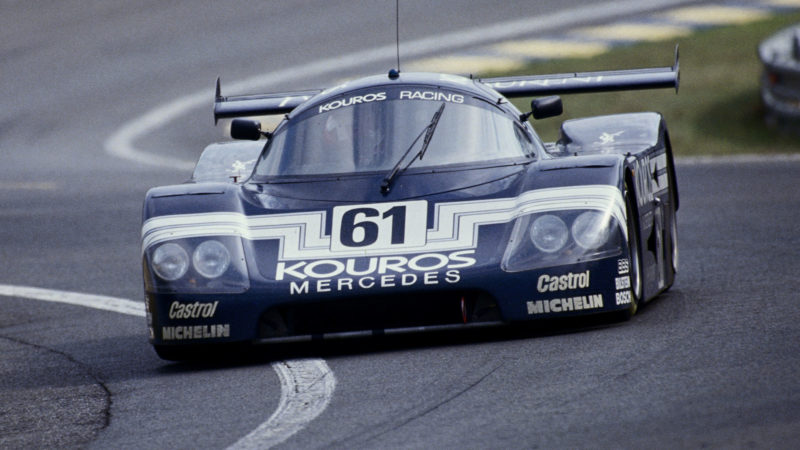Have a crack he certainly did, immediately on the pace and on the podium. People sat up, made a note of the name.
“It was fun, and I knew I could beat the other guys,” he smiles almost apologetically. “I’d already said to myself – ‘there’s 25 guys in the world racing F1 cars and, if I could do that, then I should do that.’ We looked after our own cars; I was teamed up with James Weaver, and we taught at the Scorpion Racing School together. He could build engines, fix just about anything, and we were always experimenting with stuff. James was the master of what we called the ‘big send’, attacking a corner at right angles, big slide on – probably not the most technical way to do it, but he was the master of that. He’d fly past me, throw his car into a huge slide right in front of me, crazy. They were good times.”
Thackwell’s early career was nothing less than meteoric. In 1979, at the age of just 18, he was instantly a front-runner in the Vandervell F3 series, taking five wins in a works March 793, beating the likes of Alain Prost, Nigel Mansell and Kenny Acheson. When times were hard Alan Jones helped him out with some cash and he was the talk of the town. Predictably, March took him into F2 for 1980, in the works BMW-powered 802, where he impressed again but with frustratingly few results and too many retirements. But he’d put in some brilliant drives, attracting F1 offers from Ensign when Clay Regazzoni was injured – which he turned down – and from Arrows which he accepted, standing in for an injured Jochen Mass at Zandvoort.
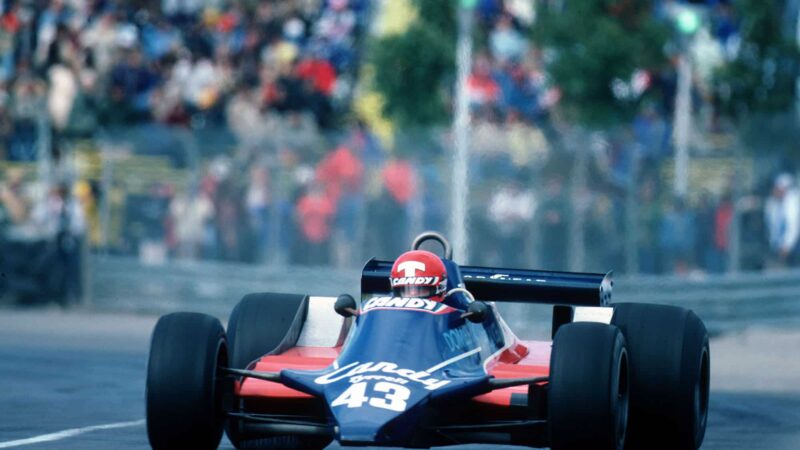
Next race with Tyrrell was promising, but Thackwell was withdrawn after a first-lap pile-up
DPPI
“That was tough,” he laughs. “I’d never sat in the car before practice and the ground effects, with those skirts, made it so heavy to drive. My neck was all over the place and I struggled to hang on to it through the long right-hander on to the straight. But I loved that run down and into Tarzan, a great corner, and we only just failed to make the grid.”
By half a second in fact, and 1.32sec behind Riccardo Patrese who’d driven the car all year. This performance came to the notice of Ken Tyrrell who offered Mike a third car for Montréal and Watkins Glen at the end of the year.
“Yeah, it all happened so quickly, and maybe I hadn’t grown up enough at that stage – I mean, I was 19 years old, for God’s sake – and there I was on the grid for the Canadian Grand Prix. But I deserved to be there, I knew I was quick enough, I had the respect of the other guys and I was confident I could do the job. Anyway, I sat on the back row in the Tyrrell, and there – just two places ahead of me – was Gilles Villeneuve, an absolute hero of mine. He was how a racing driver should be, head and shoulders above the rest of them, I reckoned. In the drivers briefings he didn’t pay much attention to all the talk of safety… He kind of sat there looking a bit bored, slightly amused by it all. Anyway, it was the time of a tyre war, and so the grid was all mixed up. The Michelins weren’t working well in the cold weather, and Villeneuve should have been way further up the grid. Jody Scheckter didn’t even qualify and I thought ‘this F1 is crazy’ – both Jody and Gilles were way more experienced than me.
